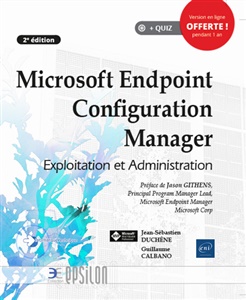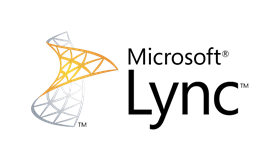Normal 0 21 false false false FR X-NONE X-NONE
Une semaine après l’examen MCTS, L’équipe Microsoft Learning lance
les inscriptions à la certification PRO de Lync Server 2010.
Aujourd’hui les personnes ayant postulées et mises à jour leur profile SME ont
pu recevoir le code de promotion permettant de s’inscrire au beta-testing de la
certification : 71-665: PRO: Microsoft Lync Server 2010, Administrator.
Notez que cette certification prend part à l’obtention du statut : MCITP: Microsoft Lync Server 2010 Administrator.
Cet examen reprend les notions suivantes :
|
Designing a Topology for Lync Server 2010 (25 percent) · Design address book. o This objective may include but is not limited to: generation; distribution; filtering; normalization; size management · Design central and branch office topology. o This objective may include but is not limited to: designing sites and pools; placement of front-end servers; simple URLs; co-locating roles; designing browser-based access; Director role; capacity considerations · Design mediation topology. o This objective may include but is not limited to: pooled Mediation Servers; standalone mediation servers; media bypass; co-location with other front-end services; capacity considerations · Design archiving and Quality of Experience (QoE) monitoring topology. o This objective may include but is not limited to: designing QoE monitoring; placement of servers; Call Detail Recording (CDR); archiving policies · Design Edge topology. o This objective may include but is not limited to: sizing, security, network, and capacity considerations; deployment; federation; reverse proxy configuration; XMPP; PIC; firewall requirements; remote access · Design Call Admission Control (CAC). o This objective may include but is not limited to: sites; site links; exemptions; PSTN bypass; rerouting; CAC policies · Calculate bandwidth. o This objective may include but is not limited to: specify network requirements; calculate voice bandwidth; calculate video bandwidth; P2P vs. conference Designing a Conferencing and Enterprise Voice Infrastructure (25 percent) · Design a dial plan. o This objective may include but is not limited to: formulate normalization rules and apply them as dial plan policies · Design for voice routing. o This objective may include but is not limited to: PSTN breakout points; PBX phones; trunk routing; media gateway; least cost/alternate routing · Define voice policies. o This objective may include but is not limited to: phone usage records; policy scope; decide level of access to certain features; private line; call parking · Define conference policies. o This objective may include but is not limited to: controlling usage; system capacity considerations · Design for Response Group Services (RGS). o This objective may include but is not limited to: workflow; contact objects; agents and queues; groups · Design for emergency services implementation. o This objective may include but is not limited to: Enhanced 911 (E911); SIP trunk emergency service providers; location policies; Location Information Service (LIS) wiremap; analyze network mapping · Plan for devices. o This objective may include but is not limited to: considerations for different endpoint types, including analog devices, common area phones, and standalone devices; DNS and DHCP requirements Planning for External Dependencies and Migration (24 percent) · Plan for DNS implementation. o This objective may include but is not limited to: internal and external DNS; identify supported DNS records; identify supported DNS servers · Plan for PKI requirements. o This objective may include but is not limited to: public and private certificates; Subject Alternate Names (SANs) · Plan for Exchange Unified Messaging (UM). o This objective may include but is not limited to: specify requirements to integrate Exchange UM with Lync Server 2010; Exchange UM dependencies; design Exchange UM dial plans · Plan for migration. o This objective may include but is not limited to: configuration requirements; side-by-side migration; Edge migration; meeting considerations; client limitation considerations Planning for High Availability and Business Continuity (26 percent) · Plan for high availability. o This objective may include but is not limited to: choosing Survivable Branch Appliance (SBA) vs. Standard vs. Enterprise in high availability; number of servers and pools required; server redundancy · Plan for load balancing. o This objective may include but is not limited to: DNS; Hardware Load Balancing (HLB) · Plan for backup and restore. o This objective may include but is not limited to: partial recovery; database considerations; DBIMPEXP · Plan for disaster recovery. o This objective may include but is not limited to: bare metal recovery; spread pools; CMS reactivation · Plan for system monitoring. o This objective may include but is not limited to: synthetic transactions; identifying components to monitor; monitoring technologies such as Microsoft System Center Operations Manager · Plan for site resiliency. o This objective may include but is not limited to: SBA; backup registrar |
La phase d’inscription prendra fin lorsque le quota de
beta-testeur aura été atteint. N'attendez pas ...
La période de passage aura lieu du 30 Décembre au 20 janvier 2010.
Enfin le code de promotion est : UCPROJ
Rendez-vous sur le site de prometric pour vous inscrire. Bon Courage !
Plus d'informations sur cet examen : http://www.microsoft.com/learning/en/us/exam.aspx?ID=70-665#tab2




